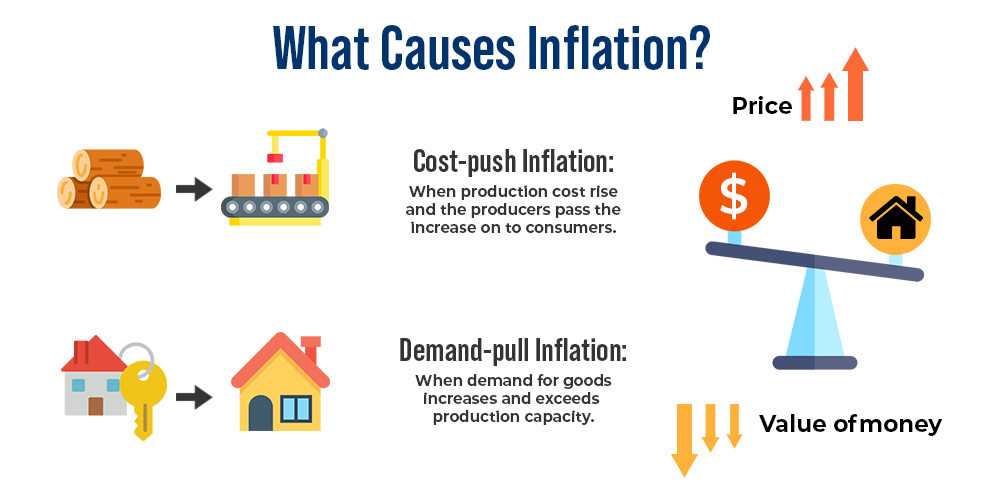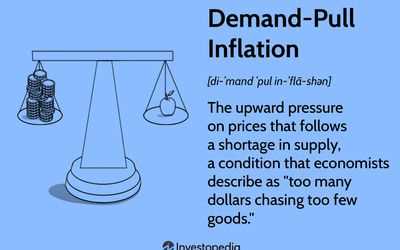What is Cost Push Inflation?
Cost push inflation is a type of inflation that occurs when the cost of production for goods and services increases, leading to an increase in prices. It is characterized by a decrease in the supply of goods and services, which leads to a rise in their prices.
There are several factors that can contribute to cost push inflation. One of the main causes is an increase in the cost of raw materials. When the prices of raw materials, such as oil, metals, or agricultural products, rise, it becomes more expensive for businesses to produce goods and services. As a result, they pass on the increased costs to consumers in the form of higher prices.
Another factor that can contribute to cost push inflation is an increase in wages. When workers demand higher wages, businesses may have to increase the prices of their products to cover the additional labor costs. This can create a cycle where higher wages lead to higher prices, which in turn lead to higher wages, and so on.
Effects of Cost Push Inflation

Cost push inflation can have several negative effects on the economy. One of the main effects is a decrease in consumer purchasing power. When prices rise, consumers have to spend more money to purchase the same amount of goods and services. This can lead to a decrease in consumer spending and a slowdown in economic growth.
Another effect of cost push inflation is a decrease in business profitability. When businesses have to pay higher costs for production, their profit margins decrease. This can lead to a decrease in investment and job creation, as businesses may be less willing to expand or hire new employees.
Additionally, cost push inflation can also lead to wage-price spirals. As prices rise due to higher production costs, workers may demand higher wages to maintain their purchasing power. This can create a cycle where higher wages lead to higher prices, which in turn lead to higher wages, and so on.
Conclusion
Cost push inflation is a type of inflation that occurs when the cost of production for goods and services increases, leading to an increase in prices. It is caused by factors such as an increase in the cost of raw materials and an increase in wages. The effects of cost push inflation can include a decrease in consumer purchasing power, a decrease in business profitability, and wage-price spirals. It is important for policymakers to monitor and address the causes of cost push inflation to ensure economic stability and growth.
The Causes of Cost Push Inflation
Cost push inflation is a type of inflation that occurs when the cost of production for goods and services increases, leading to an increase in prices. There are several factors that can contribute to cost push inflation, including:
1. Increase in wages
One of the main causes of cost push inflation is an increase in wages. When workers demand higher wages, businesses may be forced to raise prices in order to cover the additional labor costs. This can lead to a cycle of wage increases and price increases, resulting in inflation.
2. Increase in raw material prices
Another factor that can contribute to cost push inflation is an increase in the prices of raw materials. When the cost of inputs such as oil, metals, or agricultural products rises, businesses may pass on these higher costs to consumers in the form of higher prices. This can have a ripple effect throughout the economy, leading to inflation.
3. Increase in taxes and regulations

Taxes and regulations can also contribute to cost push inflation. When governments impose higher taxes or introduce new regulations, businesses may be forced to increase prices in order to maintain profitability. These additional costs can be passed on to consumers, resulting in inflation.
4. Increase in energy costs

5. Decrease in productivity
If productivity levels decrease, it can lead to higher production costs and ultimately, cost push inflation. When businesses are unable to produce goods and services efficiently, they may need to increase prices in order to maintain profitability. This can occur due to factors such as labor shortages, technological disruptions, or supply chain disruptions.

Emily Bibb simplifies finance through bestselling books and articles, bridging complex concepts for everyday understanding. Engaging audiences via social media, she shares insights for financial success. Active in seminars and philanthropy, Bibb aims to create a more financially informed society, driven by her passion for empowering others.
